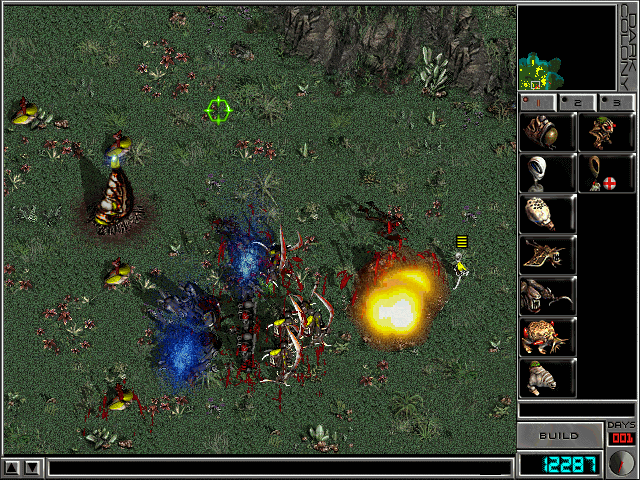

As a result, nearby units look very detailed, while faraway units are scaled down. By utilizing Intel's mesh technology, the number of polygons that represent each unit is scaled on-the-fly to keep the graphics engine chugging along without impacting performance. Most 3D processors would bog down processing the enormous number of polygons in a typical battle. Most of the time you'll stick with the default angle (F3), as switching between the angles is rarely necessary.ĭark Reign 2 takes advantage of Intel's dynamic mesh technology. Players can choose one of 6 view heights using the F1-F6 keys - from ground level to the 1,000 ft view.

Navigating the 3D world isn't as easy as a top-down 2D world, but this 3D interface is as good as it gets.

Though other RTS games have tried this stunt, none have pulled it off as smoothly and easily as Dark Reign 2. Whereas most RTS games present a single 45-degree perspective of the battlefield, Dark Reign 2 immerses you in the 3D world. The terrific Tactics engine remains intact, though everything else about the game presentation has been updated to today's technology. Technology From The Futureįrom a technology perspective, Dark Reign 2 picks up where Dark Reign 1 left off. Perhaps it wasn't the technology after all. If anything, Starcraft, Caesar III, Age of Empires II and numerous other "sprite-based" games have shown surprising longevity.

Many of us assumed that Total Annihilation would usher in the new age of 3D polygon graphics in RTS games. As it happens, real time strategy hasn't evolved the way we thought. So it was with great anticipation that I bided my time waiting for Dark Reign 2, the sum of all my hopes and dreams for the pinnacle of real time strategy (RTS). That put me in the minority - I preferred Dark Reign. Though both offered new advances in technology and gameplay, ultimately, Total Annihilation won the hearts and minds of the serious gamer. The original Dark Reign appeared on store shelves shortly after the "come from nowhere" hit Total Annihilation.


 0 kommentar(er)
0 kommentar(er)
